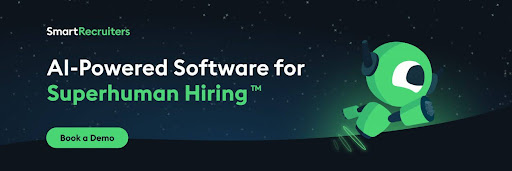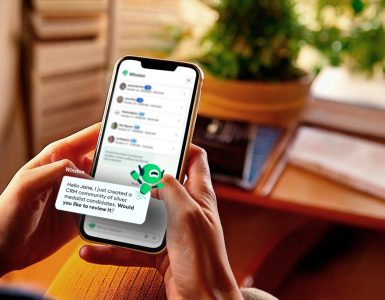In industry media and on PR/marketing blogs like this one, we talk an awful lot about “master brand” social media marketing work.
That is, the brand that companies create to drive value, revenue and reputation.
However, we don’t talk nearly as much about “employer brands.”
That is, the brand that companies create to aid and assist in recruiting (and retaining) the best talent in the market.

These “employer brands” are damn important, too. Think about a company like Home Depot. They need to recruit THOUSANDS of employees each year to help at their headquarters AND at their many, many stores across the U.S. Believe me, that “employer brand” is a big deal to a company like Home Depot.
And, it’s not just Home Depot. All sorts of companies from accounting firms to retail orgs to fast food chains like Chipotle can benefit from a strong employer brand.
So, why is it we just don’t hear a lot about this work?
For one, it’s not sexy. And, maybe more importantly, the budgets aren’t nearly as large. Without a huge agency behind the work, who’s going to write all those scintillating case study posts?
But, like I said, these employer brands are very important. And, they influence and impact bottom lines. After all, if recruiting suffers, productivity and employee morale go down. And, if those go down, I probably don’t need to tell you what happens next.
So, you would think most brands that create these “employer brands” with social executions would take them seriously, right? They’d staff them appropriately. They’d budget for them in a way that makes sense for the organization. And, they’d put the necessary weight on the work.
Except, I’m not sure that’s happening.
In fact, I would argue a strong “employer brand” is more of the exception, not the rule, when it comes to the social media components.
Let’s take a closer look at a few of the areas where “employer brands” are struggling with regard to social media:
#1: Very few Employer Brands are using Facebook advertising to promote content or drive traffic–even though those same companies were using it en force on the “master brand” side.

Let’s take my hometown Target for example. If they really wanted to drive traffic to their Bullseye View blog, wouldn’t they use Facebook advertising? I mean, it’s not like the social team at Target isn’t aware of the complete lack of organic engagement on Facebook. But, you see this consistently on the Target Careers Facebook page. Meanwhile, on the Target master brand page, you see posts like the one below. Now, I can’t guarantee Target didn’t use paid support to amplify this post, but I’d be willing to bet they did.

#2: Very few Employer Brands get creative with visual assets–even though those same companies are clearly putting effort toward generating creative visuals on the “master brand” side.

I spent some time working for an accounting firm earlier in my career (McGladrey), so I keep tabs on the industry from time to time. I knew a few firms had employer brands–including Grant Thornton (see above). Now, GT, does a number of things well with its Employer Brand work via social media, but one area where they fall down just a bit is with visuals. Using a head shot of a partner to announce his promotion just ain’t gonna cut it in 2015. Instead, I’d like to see more candid shots of partners (even though I know from experience, these will be tough to get; and, if that’s the case, I think you start the discussion around if social media is the right place to be for an employer brand). And, let’s step back for a minute. Maybe making partner announcements isn’t the best content for social media channels like Facebook. These are the kinds of conversations employer brands should be having.
#3: Many Employer Brands seem to be playing by rules of 2010 instead of the rules of 2015.

Remember posts like these? I know they still pop up on the master brand side, too. But they seem to pop up with increasing frequency on the employer brand side. Call it a generalization, but it seems many employer brands are playing by 2010 social media rules than they are by 2015 social media rules (here’s another prime example).

The rules of 2010 have employer brands using mechanisms like “Trivia Tuesday” and wishing fans a “Happy New Year” on Facebook (even though I’m not entirely sure what that has to do with recruiting top talent). Not saying those tactics can’t work, but from what I’ve seen (publicly) on some of these Employer Brand pages, the results aren’t exactly lighting the world on fire. Instead, why not showcase your PEOPLE? Your CULTURE? Those things that make your company a place where everyone should want to work? I think a lot of times, these employer brands are simply getting too cute and aren’t sticking to the primary business strategy (recruiting and retention!).
#4: Many Employer Brands take too many wide shots!

Oh man – this is one I see all the time with employer brands on social. I’ll pick on Burger King here for a second. This is a great photo. You’ve got all these great, up-and-coming leaders in it. You’ve got the CEO in it. But, it’s a wide shot. Which means we basically cannot see a single person in the pic. No one is identifiable–at least not when I see this on my laptop. Now, think about how it looks on an iPhone 5s! Very tactical, I know, but please avoid wide shots at all costs when it come to social media content.
#5: Many Employer Brands only share jobs

Yep – lots of employer brands at fault here, too. Including Nordstroms, listed above. Sure, there is some value in distributing jobs this way. Sure, it doesn’t require a lot of effort. But, how many favs/RTs do you see above? I know that’s not the primary goal here (mere views/impressions are). But, I can’t help but wonder if there’s a better use of resources and time here. See Dunkin below–a “master brand” that’s widely regarded as one of the leaders in social media marketing!

In their defense, “employer brands” are a bit newer to the whole social media marketing thing than their “master brand” counterparts (and, like I said above, they usually have tiny budgets comparatively, too). But, that doesn’t necessarily excuse some of what you see above.
Also, keep in mind, I’m not inside the walls of these companies. I don’t know their strategies. Their goals. What they’re trying to accomplish. So, for me to pontificate and say these brands are “failing” when it comes to social execution isn’t really fair. I’m just trying to point out trends I’ve seen with employer brands, as I’ve done some work in this area of the last couple years myself (and I’ll be posting on Employer Brand “best practices” soon – so, I’m not all Negative Nellie all the time!).
I’m hoping by pointing out ways we can all improve, that collectively we will get smarter about how we use social channels on the “employer brand” side.
This article was written by Arik Hanson from Business2Community and was legally licensed through the NewsCred publisher network.
![]()






